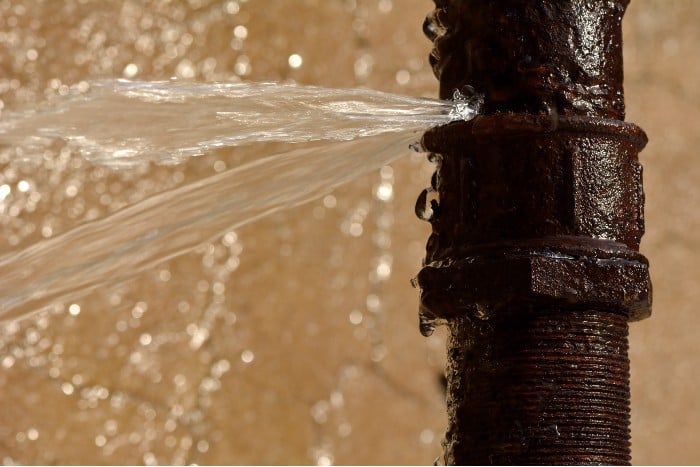Learn About 6 Common Causes Behind Water Seepage in Your House
Learn About 6 Common Causes Behind Water Seepage in Your House
Blog Article
What are your opinions on Common Water Leaks In House?

Leakages not just cause waste of water yet can additionally cause unneeded damages to your home and advertise undesirable organic development. Water leaks could go unnoticed because many of the pipework in our residence is hidden. By looking and understanding for day-to-day scenarios that create leakages, you can secure your house from future leakages as well as unnecessary damage. Today, we will certainly check out six leakage causes that may be triggering your pipes to trickle.
Trespassing roots
Many water leakages begin outside the home rather than inside it. You may observe damp spots or sinkholes in your backyard, and also that could mean that tree origins are attacking water lines triggering water to seep out.
Corroded water supply
As time passes by, your plumbing system ages as well as corrosion such as corrosion may begin eating away the pipes. This could be the root cause of staining or warping on your pipes. This requires an assessment with your plumber promptly. Consider changing the pipes since they are at a higher threat of rust than the more recent designs if our plumbing system is old.
Malfunctioning Pipeline Joints
The factor at which your pipes attach is frequently the weakest link in the waterline. Pipeline joints can deteriorate gradually, causing water leaks. Regrettably, most of pipeline joints are not easily visible. If you have loud pipelines that make ticking or banging sounds, specifically when the warm water is activated, your pipeline joints are probably under a great deal of stress. It is a good idea to have your plumber evaluate your system once a year.
Immediate temperature level adjustments.
Severe temperature level adjustments in our pipelines can trigger them to broaden as well as contract unexpectedly. This expansion and also tightening may cause splits in the pipelines, particularly if the temperature are below freezing. It would be best if you watched on exactly how your plumbing works. The presence of the previously stated scenarios regularly indicates a high risk.
Poor Water Connectors
Sometimes, a leakage can be brought on by loose tubes and pipes that provide your appliances. More often than not, moving is what creates the loose water Connections. You might locate when it comes to a cleaning maker, a tube may spring a leakage as a result of shaking during the spin cycle. In case of a water connections leakage, you might discover water running straight from the supply line or puddles around your appliances.
Blocked Drains
Obstructed drains might be bothersome and also inconveniencing, yet they can in some cases wind up triggering an overflow leading to break pipes. Keep getting rid of any materials that may decrease your drains that could obstruct them to avoid such troubles.
All the above are root causes of leaks yet not all water leakages arise from plumbing leaks; some leaks could originate from roofing system leakages. All leakages should be repaired quickly to stay clear of water damage.
Leaks not just trigger waste of water yet can additionally trigger unnecessary damage to your residence and promote undesirable organic development. By comprehending and also looking for everyday circumstances that create leaks, you can shield your house from future leaks and unneeded damages. Today, we will certainly look at six leakage creates that might be creating your pipes to trickle.
At times, a leakage can be triggered by loosened hose pipes and also pipes that provide your home appliances. In situation of a water links leakage, you might discover water running straight from the supply line or pools around your appliances.
How To Check For Water Leak In Your Home
How To Check for Leaks
The average household's leaks can account for nearly 10,000 gallons of water wasted every year and ten percent of homes have leaks that waste 90 gallons or more per day. Common types of leaks found in the home are worn toilet flappers, dripping faucets, and other leaking valves. These types of leaks are often easy to fix, requiring only a few tools and hardware that can pay for themselves in water savings. Fixing easily corrected household water leaks can save homeowners about 10 percent on their water bills.
To check for leaks in your home, you first need to determine whether you're wasting water and then identify the source of the leak. Here are some tips for finding leaks:
Take a look at your water usage during a colder month, such as January or February. If a family of four exceeds 12,000 gallons per month, there are serious leaks.
Check your water meter before and after a two-hour period when no water is being used. If the meter changes at all, you probably have a leak.
Identify toilet leaks by placing a drop of food coloring in the toilet tank. If any color shows up in the bowl after 10 minutes, you have a leak. (Be sure to flush immediately after the experiment to avoid staining the tank.)
Examine faucet gaskets and pipe fittings for any water on the outside of the pipe to check for surface leaks.
Undetected water leaks can happen without the home or business owner even realizing. If you suspect a water leak, but not able to find the source. It is time to contact a professional water leak detection service, The Leak Doctor.
How To Find a Water Leak In Your Home
https://www.leakdoctor.com/blog/How-To-Check-For-Water-Leak-In-Your-Home_AE197.html

We had been shown that write-up on How to detect water leaks in your home through an associate on our other site. If you please take the time to distribute this write-up if you enjoyed reading it. Bless you for your time. Visit us again soon.
Hot water gone? Dial here. Report this page